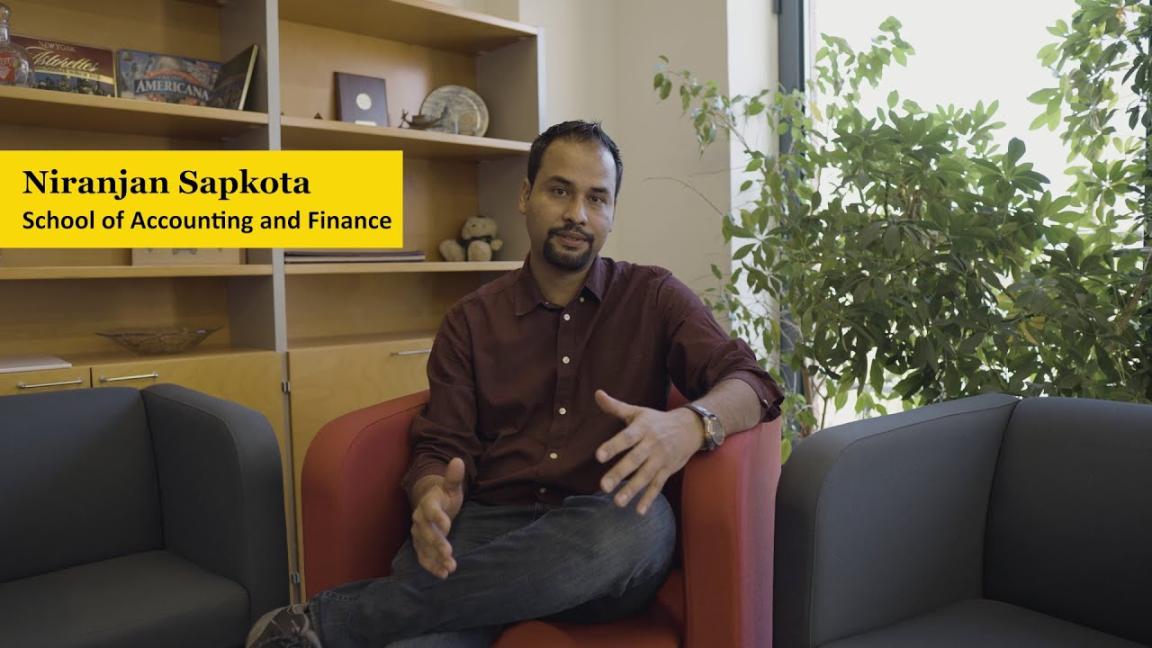No opportunity comes without risk – assess at least these 13 risks when investing in cryptocurrencies
The amount and the nature of the risk vary according to the different characteristics of the currencies. One of the biggest risks is the insolvency of a cryptocurrency.
– More than 12,000 cryptocurrencies have gone bankrupt or died since the birth of the most famous cryptocurrency Bitcoin in 2009. Some coins are still on the verge of default, says Sapkota, who will publicly defend his dissertation on Friday 14th of October 2022.
In addition to solvency risk, Sapkota identifies sustainability risk, seclusion risk, sentiment risk and speculation risk, among others. Stability, scam, schooling, steward, and scalability are also cryptocurrency risk factors. Security, societal risks, and systemic risks such as those related to regulation can also affect currencies.
How to identify cryptocurrencies that are vulnerable to default?
The results of Sapkota's doctoral research show that cryptocurrency bankruptcies are predictable. How can investors avoid the most bankruptcy-prone cryptocurrencies?
– For example, you could look for a cryptocurrency with a strong day one but a moderate first month return. Also avoid coins from anonymous founders with high levels of premining and relatively high mining rewards per block, says Sapkota.
Cryptocurrencies can be "green" and "dirty" at the same time
The massive energy consumption and carbon footprint associated with cryptocurrency mining are making the news headlines. Cryptocurrencies can be either "green" or "dirty" (polluting).
– A cryptocurrency like Bitcoin is considered dirty because it uses a massive amount of electricity for verifying and storing transactions on its public blockchain. In contrast, Ethereum, the world's second most popular crypto, has shifted to a proof-of-stake consensus mechanism to validate transactions. This has reduced energy consumption by 99%, says Niranjan Sapkota.
Although energy-intensive cryptocurrencies are vulnerable to changes in energy prices, Sapkota's dissertation shows that energy consumption does not seem to play a role in the pricing of cryptocurrencies.
– The price is driven by trust factors rather than energy consumption.
Cryptocurrencies used for illegal activities can also be described as dirty. Therefore, even a green, environmentally friendly crypto with a lower carbon footprint can at the same time be dirty based on its own usage history. According to Sapkota, criminals are particularly keen on privacy-oriented cryptos, i.e., cryptocurrencies where all information is encrypted. These cryptos carry a risk of seclusion. Such currencies differ from Bitcoin that has a publicledger that contains a transparent history of every transaction.
Bitcoin will stay as long as there are optimists in the market
Over the past decade, mainstream media has written a lot about Bitcoin. Bitcoin hackings, crypto exchange collapses, scams and government bans, regulations, and taxes on cryptocurrencies have been in the headlines worldwide. Bitcoin has even been declared "dead" many times in the media.
– On the other hand, news such as Tesla's announcement of acquiring $1.5 billion worth of Bitcoin have given Bitcoin significant positive hype. However, market sentiment turned around when the company's CEO Elon Musk removed Bitcoin as a payment option from Tesla's website, saying it posed an energy, environmental and sustainability risk.
The sentiment conveyed or imposed by the media has been easily noticeable when looking at the volatility of the Bitcoin price after big news in the media. According to Sapkota's research, the Bitcoin market is largely driven by the media sentiment of financially optimistic investors.
Don't fall into the fear trap
Fear is the most frequently identified emotion associated with cryptocurrency-related white papers. This might be the indication of an initial coin offering, a blockchain-based crowdfunding technique, marketing strategy, where customers are attracted by triggering fear on them.
– Investors who are afraid of risk, change, problems, regulation, or loss will easily fall into the fear trap of scammers and lose their money. You should never let emotion overpower intelligence while selecting a crypto project, says Niranjan Sapkota.
While many people in the world use the internet, few use cryptocurrencies. Cryptocurrencies such as Bitcoin are more than ten years old, but their adoption rate is still very low. Sapkota is therefore concerned about the lack of schooling as it imposes a huge risk to crypto adoption.
Steward risk, or custodian risk, is present in all types of cryptocurrency digital wallets. If cryptocurrencies are held in custody by a third party, the worst case scenario could be the seizing of the funds in the hosted wallet. Even self-custody might not be safe as there is no other way to retrieve the coin if the wallet or private key is lost.
Cryptocurrencies are very volatile. To overcome this, developers have invented stablecoins. In these, the value of the cryptocurrency is linked to dollars, crypto portfolios, or algorithms. According to Nirajan, even stablecoins are not always stable, as demonstrated by the collapse of the Terra stablecoin in spring 2022.
The societal risk may increase with institutional investors
In addition to the risks mentioned above, Niranjan also highlights the risks associated with scams, speculation, systemic changes, and societal impacts.
– Similar to traditional asset markets, new digital financial market also carries risks such as speculation, fraud, money laundering and hacking. Institutional investors have recently entered cryptocurrency markets and are storing significantly larger amounts of money in their digital wallets than retail investors are. Losing a significant amount of money is a huge societal risk, says Sapkota.
Moreover, the systemic or regulatory risk of cryptocurrencies like Bitcoin increases as the concentration of power shifts to a handful of miners and cryptocurrency holders.
Figure: The 13 sides of cryptocurrency risk. Niranjan Sapkota 2022.

Public defence
The public examination of M.Sc. Niranjan Sapkota’s doctoral dissertation ”Essays on the New Blockchain-Based Digital Financial Market: Risks and Opportunities” will be held on Friday 14th Oct 2022 at noon at the University of Vaasa, auditorium Kurtén. It is possible to follow the defence online (Zoom, password: 033797)
Professor John Paul Broussard (University of Oklahoma) will act as an opponent and Professor Timo Rothovius as a custos.
Niranjan Sapkota
Niranjan Sapkota was born in 1987 in Nepal. He has a bachelor’s degree in Business Administration from Tribhuvan University, Nepal and a M.Sc. in Economics and Business Administration from the University of Oulu, Finland. He is currently working on a FinTech project funded by the Foundation for Economic Education (Liikesivistysrahasto) at the University of Vaasa.
